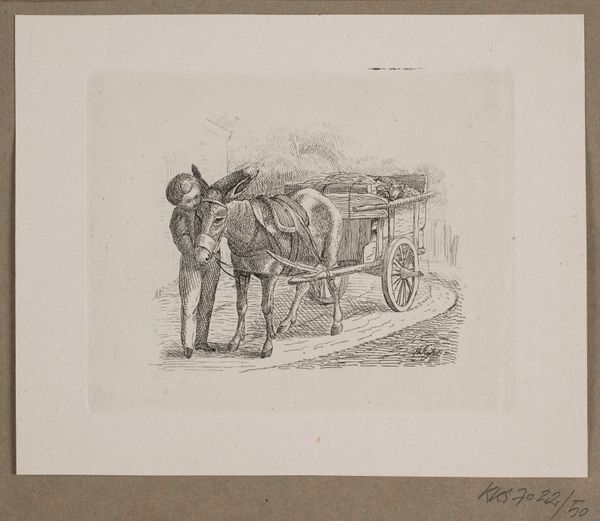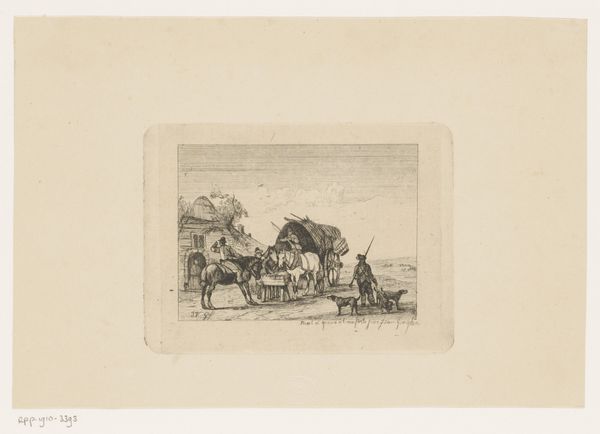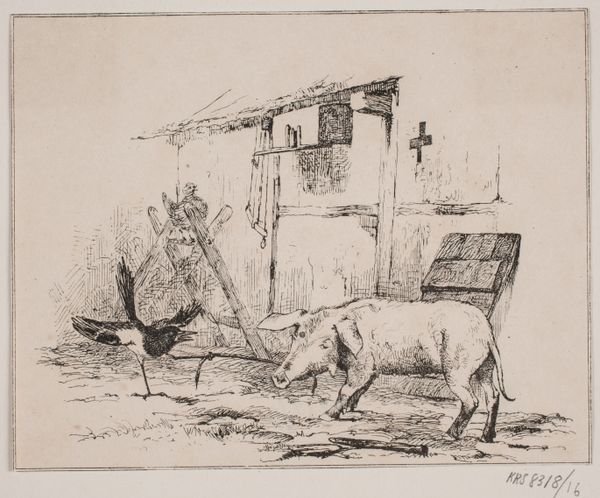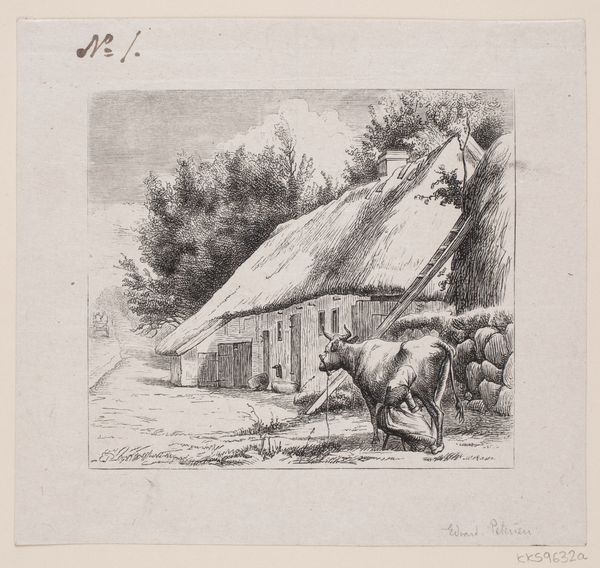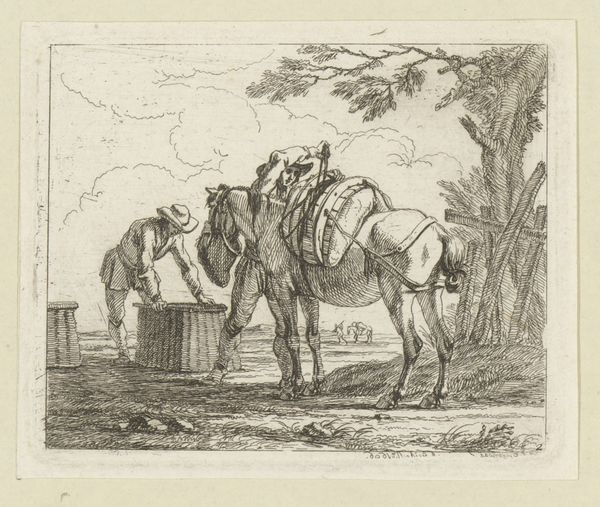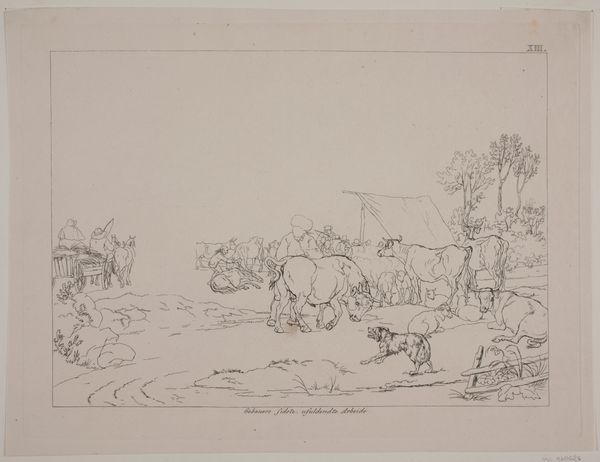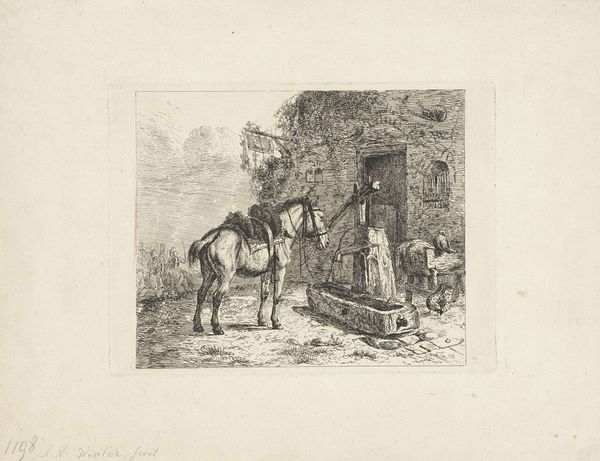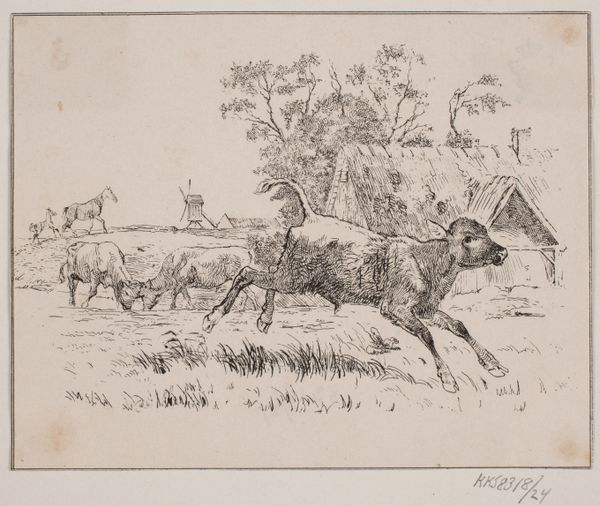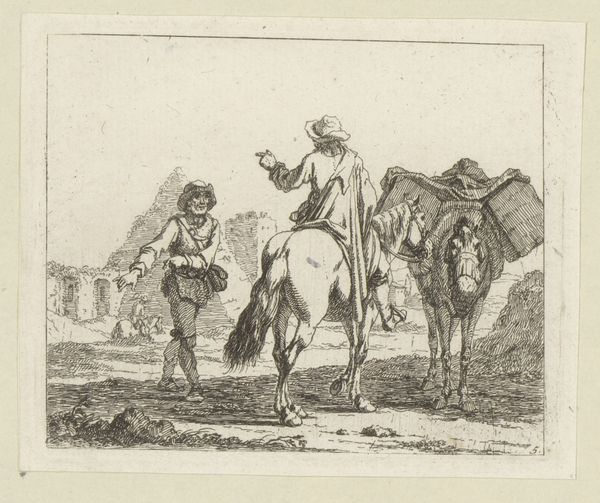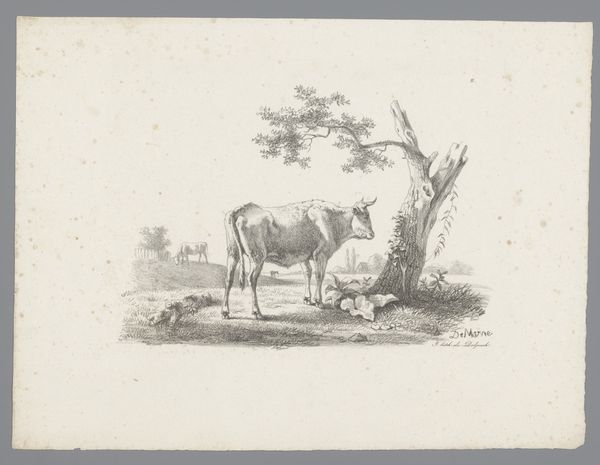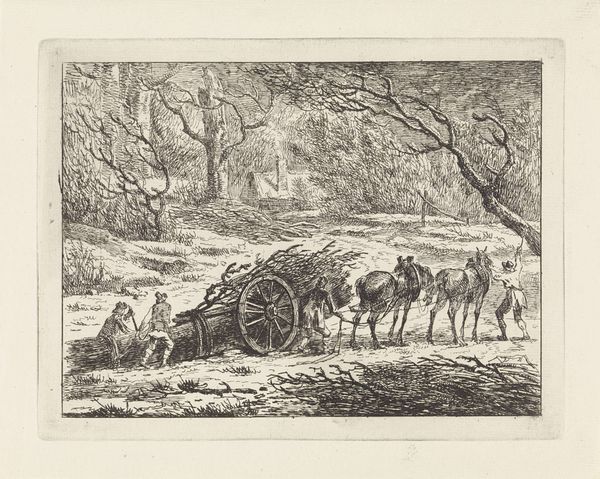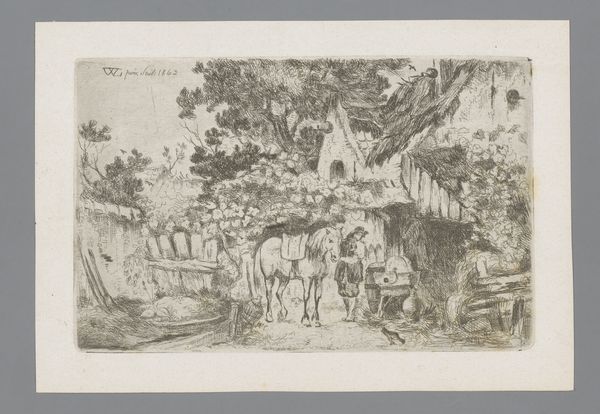
En dreng pynter en hest seletøj med grønne grene 1826 - 1893
0:00
0:00
drawing, print, etching, woodcut
#
drawing
# print
#
etching
#
landscape
#
woodcut
#
genre-painting
Dimensions: 138 mm (height) x 190 mm (width) (bladmaal)
Curator: This etching by H. C. Henneberg, dating from 1826 to 1893, is titled "En dreng pynter en hest seletøj med grønne grene", or "A boy decorates a horse's harness with green branches". It’s currently held at the SMK, the National Gallery of Denmark. Editor: What a wonderfully whimsical image! It's got a gentle, nostalgic charm. I immediately think of simpler times, of a deep connection to nature and animals. The soft lines of the etching give everything a kind of dreamy, ephemeral quality. Curator: It's interesting that you use the word 'whimsical.' This image is clearly meant to portray a bucolic scene. Think of how the boy seems to be adorning the horse, perhaps for a holiday or a parade? This kind of idealized peasant life was a recurring theme in art during this period, often subtly reflecting larger social narratives. Editor: Right. And I wonder if that boy sees the adornment as something beautiful, too. Maybe the horse has always loved greens or, I imagine, feels ticklish. It has humor because everything in this artwork lives for each other, as a connection from soul to soul. Curator: You raise a great point. The chickens add a rustic realism to the scene, something the audience back then yearned for, especially as urbanization started to pull at society’s roots. Henneberg highlights a certain idealized notion of labor and a strong connection to land in the scene. Editor: Absolutely. Look at the loose etching style. It’s like a memory half-formed, full of the energy and optimism and maybe just a bit of rebellion in the child’s little moment of decoration, don’t you think? Curator: Indeed. We need to remember how these images shaped the urban perception of rural life in 19th-century Denmark. Was it a realistic view or an aesthetic and political construction? These genre paintings like the etching allowed viewers to indulge in their own longing. Editor: Longing and possibility, definitely! Looking at it now, that kid adorning his horse feels, on a deeper level, like me when I start to draw the line—of making anything. Curator: Thanks, I think it’s been useful to tease out what's idyllic romanticism and perhaps the tougher economic implications intertwined with it. Editor: And to realize that even history-packed artworks can still, for each viewer, have their moment in time.
Comments
No comments
Be the first to comment and join the conversation on the ultimate creative platform.
